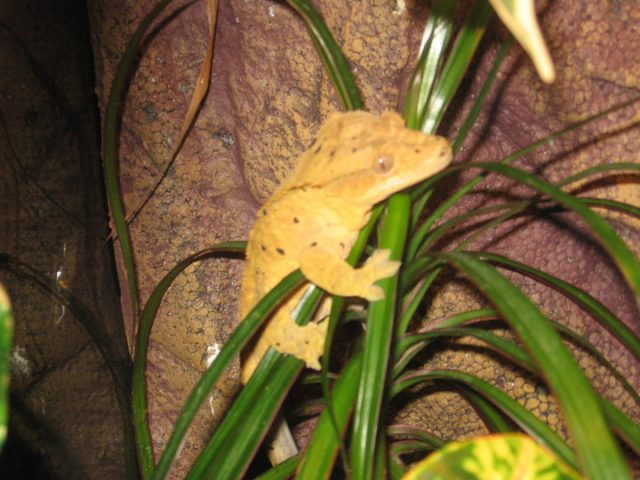Type the name of the breed you're looking for below
[wpdreams_ajaxsearchlite] Don't see the breed your're looking for? Click here and let us know!
Crested Gecko
| Place of Origin and Range | It makes its home in holes in trees on the island of New Caledonia. Its range includes all of the southern and eastern portions of the main island as well as several of the smaller islands in the group. |
| Description | The crested gecko has hair-like projections found above the eyes, resembling eyelashes. It has a wedge-shaped head and a crest that runs from each eye to the tail. The crested gecko has many naturally occurring colour groups, some of which include: grey, brown, red, orange, and yellow of various shades. They have variable markings, which include spots, straight stripes, and tiger-like stripes. The colours are brighter and more prominent at night. The crested gecko has distinct structural morphs in head size and crest abundance. |
| Morph Patterns Available | Yes |
| Adult Size | Can grow up to 7 in ( 17.5 cm) |
| Accommodation | Most geckos prefer warm habitat with lots of shade and hides. High humidity and lots of branches for climbing. Provide a small water dish and mist twice daily. Cover the sides of the cage when possible to prevent injury to your gecko from running into glass. |
| Lifespan | Can live up to 20 years |
| Feeding / Diet | Feeds on insects and fruit. |
| Other Considerations | Healthy geckos with appropriate living conditions shed regularly. They shed completely and often eat their shed to the point where the keeper may not even notice that the gecko has shed. Some geckos experience shedding problems occasionally and others chronically have difficulty shedding. Signs of shedding difficulty range from large sheets of shed clinging to the head, tail or limbs to residual shed left around the eyes, on the tail tip or the toes. This shed must be removed since it can cause constrictive damage to the extremities. All geckos require calcium to maintain strong bones and vitamin D3 to aid in metabolizing the calcium. Calcium is generally supplied in powdered form in a bowl, through dusted feeders or as an ingredient in fruit. |



